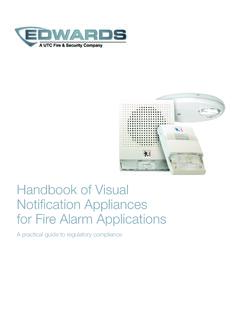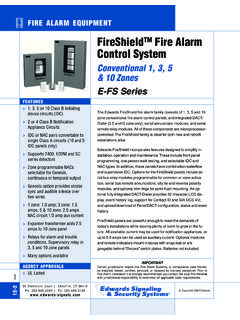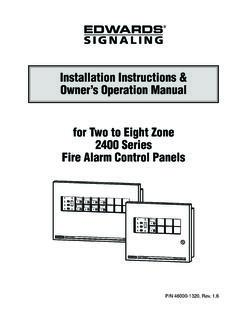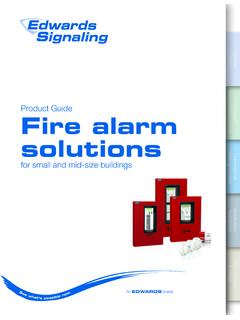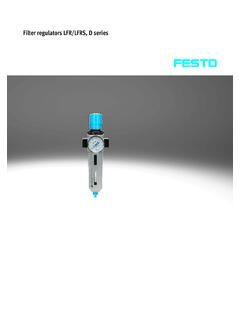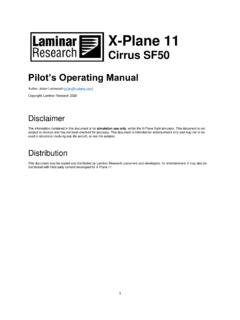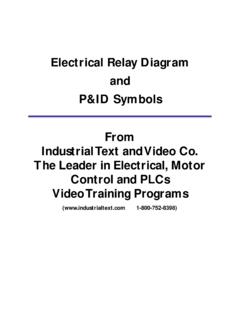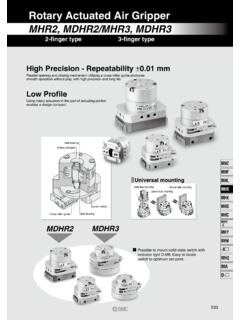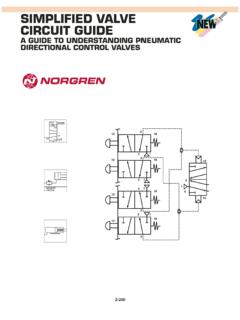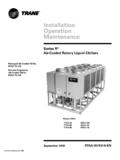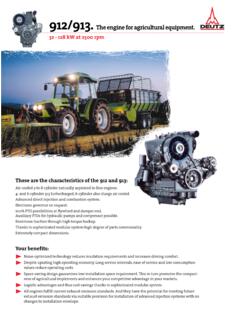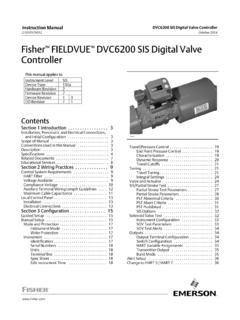Transcription of Smoke, Heat, and Duct Detectors Application Bulletin
1 Smoke, Heat, and Duct Detectors Application Bulletin P/N 3101212 REV 02 REB 26 JUL13 Copyright 2013 UTC Fire & Security Americas Corporation, Inc. All rights reserved. This document may not be copied in whole or in part or otherwise reproduced without prior written consent from UTC Fire & Security Americas Corporation, Inc., except where specifically permitted under US and international copyright law. Disclaimer The information in this document is subject to change without notice. UTC Fire & Security Americas Corporation, Inc. assumes no responsibility for inaccuracies or omissions and specifically disclaims any liabilities, losses, or risks, personal or otherwise, incurred as a consequence, directly or indirectly, of the use or Application of any of the contents of this document.
2 For the latest documentation, contact your local supplier or visit us online at This publication may contain examples of screen captures and reports used in daily operations. Examples may include fictitious names of individuals and companies. Any similarity to names and addresses of actual businesses or persons is entirely coincidental. Trademarks and patents The Edwards Signaling name and logo are registered trademarks of UTC Fire & Security Americas Corporation, Inc. Other trade names used in this document may be trademarks or registered trademarks of the manufacturers or vendors of the respective products. Intended use Use this product only for the purpose it was designed for; refer to the data sheet and user documentation for details.
3 For the latest product information, contact your local supplier or visit us online at FCC compliance This equipment has been tested and found to comply with the limits for a Class A digital device, pursuant to part 15 of the FCC Rules. These limits are designed to provide reasonable protection against harmful interference when the equipment is operated in a commercial environment. This equipment generates, uses, and can radiate radio frequency energy and, if not installed and used in accordance with the instruction manual, may cause harmful interference to radio communications. You are cautioned that any changes or modifications not expressly approved by the party responsible for compliance could void the user's authority to operate the equipment.
4 Smoke, Heat, and Duct Detectors Application Bulletin i Content Related documentation ii Overview of smoke, heat, and duct Detectors 1 Heat detector applications 3 Introduction 3 E-HD Fixed-Temperature/Rate of Rise Heat Detector 3 Spacing of heat Detectors 3 Ceiling height and construction 7 Exposed solid joists 8 Exposed beams 10 Sloped ceilings 12 Smoke detector applications 14 Introduction 14 E-PD Photoelectric Smoke Detector 14 E-PHD multi-sensor smoke detector 14 Avoidance of false alarms 15 Spacing of smoke Detectors 17 Stratification 17 Partitions 19 Exposed solid joists 19 Exposed beams 21 Sloped ceilings 23 High air movement 23 Under floor installations 24 Effects of heating, ventilating, and air conditioning (HVAC) systems 25 Door release service 26 Smoke detector locations 26 Duct smoke detector applications 27 Introduction 27 E-PDD Duct Smoke Detector installation guidelines 27 Air sampling tube 28 Air velocity 29 Avoidance of false alarms 29 Initial installation testing 30 Duct smoke detector initial installation test 30 Sensitivity readings 34 Routine maintenance 35 Scheduled testing 35 Detector cleaning procedure 37 Recalibrate a device and record detector sensitivity and available compensation 39 ii Smoke, Heat, and Duct Detectors Application Bulletin Related documentation RNFPA National Fire Protection Association (NFPA)
5 1 Batterymarch Park Box 9101 Quincy, MA 02269-9101 NFPA 70 National Electric Code NFPA 72 National Fire Alarm Code N FPA 90A Installation of Air conditioning and Ventilating Systems RUL Underwriters Laboratories, Inc. (ULI) 333 Pfingsten Road Northbrook, IL 60062-2096 UL 38 Manually actuated Signaling Boxes UL217 Smoke Detectors , Single & Multiple Station UL 228 Door Closers/Holders for Fire Protective Signaling Systems UL 268 Smoke Detectors for Fire Protective Signaling Systems UL 268A Smoke Detectors for Duct Applications UL 346 Waterflow Indicators for Fire Protective Signaling Systems UL 464 Audible Signaling Appliances UL 521 Heat Detectors for Fire Protective Signaling Systems UL 864 Standard for Control Units for Fire Protective Signaling Systems UL 1481 Power Supplies for Fire Protective Signaling Systems UL 1638 Visual Signaling Appliances UL 1971 Visual Signaling Appliances R Underwriters Laboratories of Canada (ULC)
6 7 Crouse Road Scarborough, Ontario M1R 3A9 ULC S527 Standard for Control Units for Fire Alarm Systems ULC S524 Standard for the Installation of Fire Alarm Systems ULC S529 Smoke Detectors for Fire Alarm Systems ULC S536 Standard for the Inspection and Testing of Fire Alarm Systems ULC S537 Standard for the Verification of Fire Alarm Systems NEMA Guide for Proper Use of Smoke Detectors in Duct Applications Requirements of state and local building codes Requirements of the Authority Having Jurisdiction Overview of smoke, heat, and duct Detectors Smoke, Heat, and Duct Detectors Application Bulletin 1 Overview of smoke, heat, and duct Detectors This group of Detectors comprises of a variety of detection technologies available in various combinations to meet the needs of the fire protection community.
7 The smoke and heat Detectors are constructed of a white, high-impact polymer and plug into one of a variety of mounting bases that feature base locking tabs. The duct smoke Detectors are constructed of a black, high-impact polymer with a clear plastic cover and attach directly to the HVAC system duct. The table below lists the available detector models. Smoke, heat, and duct Detectors Model Description E-PD Photoelectric smoke detector E-PHD Combination photoelectric smoke and 135 F (57 C) fixed-temperature heat detector E-HD Combination 135 F (57 C) fixed-temperature and 15 F (8 C) per minute rate-of-rise heat detector E-PDD Duct smoke detector The smoke and heat Detectors are analog addressable devices that contain their own microprocessors, which allow them to make alarm decisions based on the information collected by their sensors.
8 Depending on the detector, decisions may be based on the information gathered by up to two independent sensing elements. The address of each detector is assigned using the two rotary switches located on the detector. These Detectors provide LEDs that indicate the detector s condition. In normal condition, the network control panel performs background supervision indicated by the flashing green LED. An alarm condition is indicated by the flashing red LED. Multiple sensing technologies are incorporated into E-PHD and E-HD Detectors , which makes them suitable for a wide range of applications. The tables in the Heat detector applications section of this document list the applications suitable for the E-PHD and E-HD. Tables in the Smoke detector applications section list the applications suitable for the E-PD and E-PHD.
9 The Overview of smoke, heat, and duct Detectors 2 Smoke, Heat, and Duct Detectors Application Bulletin Duct smoke detector applications section of this document lists the applications suitable for the E-PDD. E-PD, E-PHD, and E-PDD Detectors offer a variety of sensitivity settings. The alarm sensitivity is the minimum obscuration level at which the detector will initiate an alarm condition. The alarm sensitivity level may be changed to any of five sensitivity settings using front panel programming or the configuration utility. All smoke Detectors offer alarm verification, which is used to validate an alarm condition before it is processed by the control panel. When enabled, the alarm verification function tries to reset a detector that has initiated an alarm condition.
10 If the detector cannot be reset or if it returns to its alarm condition within the required time window, the alarm is considered valid and is processed by the control panel. Heat detector applications Smoke, Heat, and Duct Detectors Application Bulletin 3 Heat detector applications Introduction WARNING: This detector is intended for use with ionization and/or photoelectric smoke Detectors . The heat detector by itself does not provide life safety protection. Heat Detectors sense a change in air temperature and initiate alarms based on a fixed-temperature point, rate of temperature rise, or amount of temperature rise above ambient condition. Spot type heat Detectors should be selected so that the rating is at least 20 F (11 C) above maximum expected ceiling temperature.



